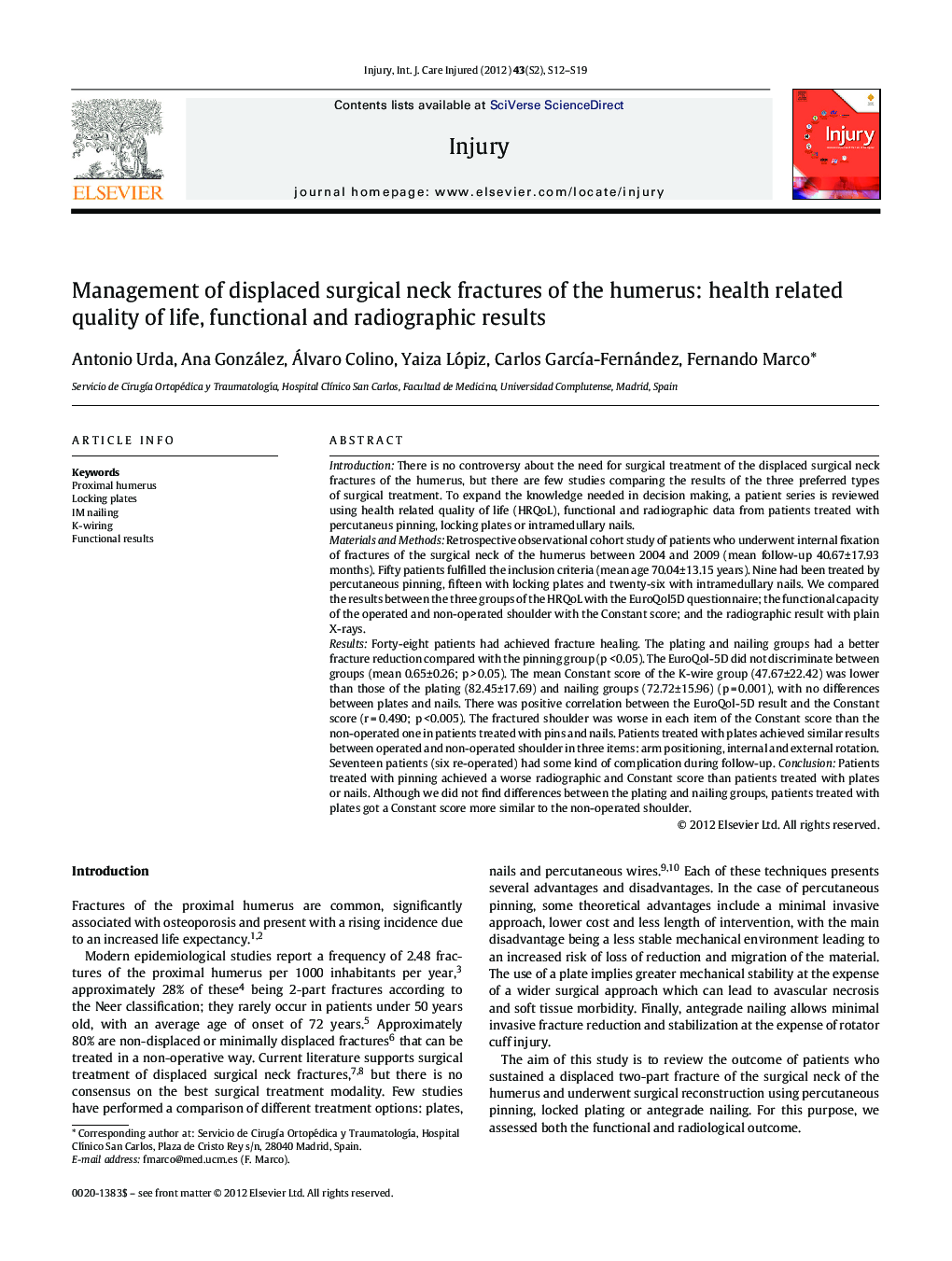| کد مقاله | کد نشریه | سال انتشار | مقاله انگلیسی | نسخه تمام متن |
|---|---|---|---|---|
| 3241341 | 1206073 | 2012 | 8 صفحه PDF | دانلود رایگان |

IntroductionThere is no controversy about the need for surgical treatment of the displaced surgical neck fractures of the humerus, but there are few studies comparing the results of the three preferred types of surgical treatment. To expand the knowledge needed in decision making, a patient series is reviewed using health related quality of life (HRQoL), functional and radiographic data from patients treated with percutaneus pinning, locking plates or intramedullary nails.Materials and MethodsRetrospective observational cohort study of patients who underwent internal fixation of fractures of the surgical neck of the humerus between 2004 and 2009 (mean follow-up 40.67±17.93 months). Fifty patients fulfilled the inclusion criteria (mean age 70.04±13.15 years). Nine had been treated by percutaneous pinning, fifteen with locking plates and twenty-six with intramedullary nails. We compared the results between the three groups of the HRQoL with the EuroQol5D questionnaire; the functional capacity of the operated and non-operated shoulder with the Constant score; and the radiographic result with plain X-rays.ResultsForty-eight patients had achieved fracture healing. The plating and nailing groups had a better fracture reduction compared with the pinning group (p <0.05). The EuroQol-5D did not discriminate between groups (mean 0.65±0.26; p >0.05). The mean Constant score of the K-wire group (47.67±22.42) was lower than those of the plating (82.45±17.69) and nailing groups (72.72±15.96) (p = 0.001), with no differences between plates and nails. There was positive correlation between the EuroQol-5D result and the Constant score (r = 0.490; p <0.005). The fractured shoulder was worse in each item of the Constant score than the non-operated one in patients treated with pins and nails. Patients treated with plates achieved similar results between operated and non-operated shoulder in three items: arm positioning, internal and external rotation. Seventeen patients (six re-operated) had some kind of complication during follow-up.ConclusionPatients treated with pinning achieved a worse radiographic and Constant score than patients treated with plates or nails. Although we did not find differences between the plating and nailing groups, patients treated with plates got a Constant score more similar to the non-operated shoulder.
Journal: Injury - Volume 43, Supplement 2, December 2012, Pages S12–S19